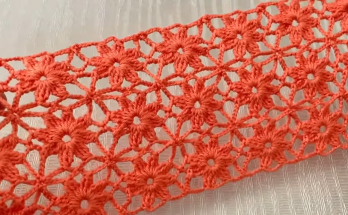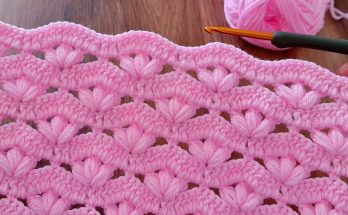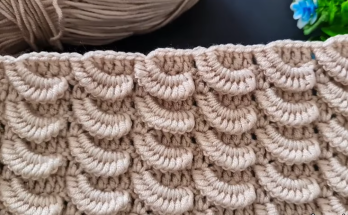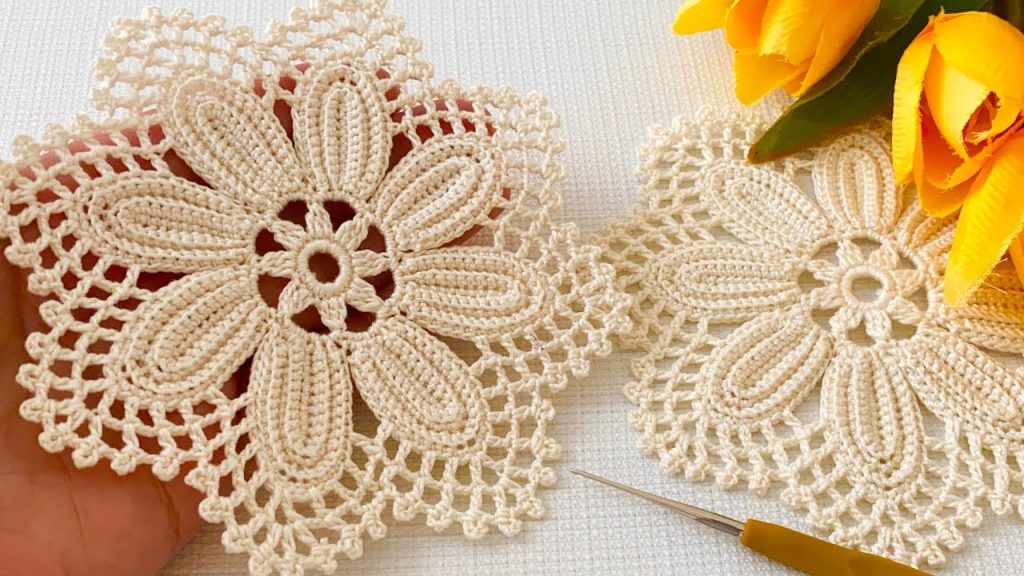
Welcome, floral crochet enthusiasts! Today, we are creating the Heirloom Petal Square, a magnificent motif that centers around a dense, realistic flower with layered petals. The solid texture of the bloom contrasts beautifully with the fine, open lacework of the square border, making this piece perfect for joining into a delicate blanket, a charming pillow, or a spectacular table runner.
This pattern is worked in the round from the center out. It is written using U.S. Crochet Terminology.
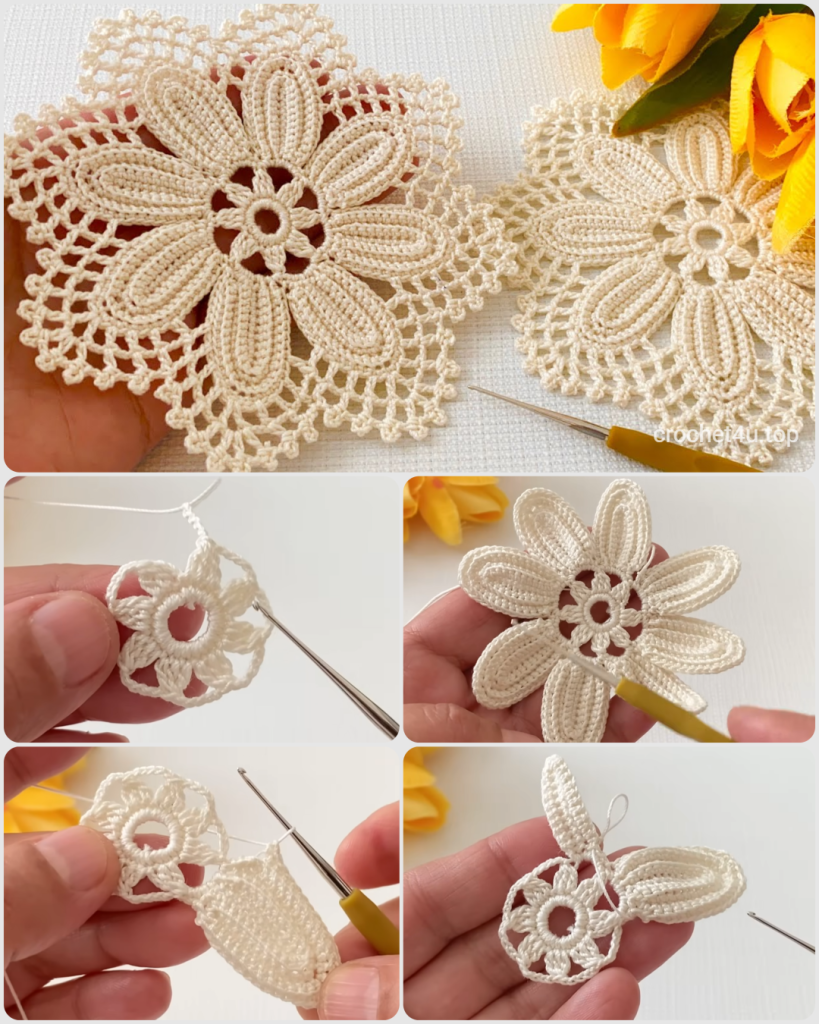
✨ Part 1: Materials, Gauge & Preparation
| Icon | Item | Details & Notes |
| 🧶 | Yarn/Thread | Use Size 10 or Size 20 Mercerized Cotton Thread for a crisp, defined finish, or a Fingering/Light Fingering weight yarn for a softer blanket square. The creamy ivory color is exquisite! |
| 鉤 | Crochet Hook | A steel hook suitable for your thread (e.g., 1.75 mm to 2.5 mm), or a 3.0 mm to 3.5 mm hook for thicker yarn. |
| ✂️ | Tools | A sharp pair of scissors and a tapestry needle for weaving ends. |
| 📏 | Size | The finished square should measure approximately 5.5′′×5.5′′ after blocking. |
📚 Part 2: Essential Stitches and Special Terms
This pattern uses taller stitches to create the dimension of the petals and a simple mesh for the square border.
| Stitch | Abbreviation | Description |
| Chain | ch | Yarn over, pull through loop on hook. |
| Slip Stitch | sl st | Insert hook, yarn over, pull through work and loop on hook. |
| Single Crochet | sc | Standard single crochet. |
| Double Crochet | dc | Standard double crochet. |
| Treble Crochet (tr) | tr | Standard treble crochet (yarn over twice). |
| Long Single Crochet (LSC) | LSC | Insert hook into the space two rows below and work an sc. |
| Petal Cluster (PC) | PC | 7 dc worked into the designated stitch/space. |
🌸 Part 3: The Solid Center & Petal Bases (Rounds 1–4)
We establish the center and the structure for the eight layered petals.

Foundation:
- ch 5, sl st into the first ch to form a ring.
Round 1 (Center Ring):
- ch 3 (counts as first dc).
- Work 15 dc into the center ring.
- sl st to the top of the starting ch-3 to join. (16 dc)
Round 2 (First Petal Layer – Back):
- ch 1 (does not count as a stitch).
- sc in the first st.
- ch 3.
- Skip 1 st.
- sc in the next st.
- Repeat from ** around.
- End with ch 3. sl st to the first sc to join. (8 ch-3 loops)
Round 3 (Second Petal Layer – Front):
- sl st into the first ch-3 space.
- ch 1 (does not count as a stitch).
- Work 3 sc in the ch-3 space.
- 3 sc in the next ch-3 space.
- Repeat from ** around.
- sl st to the first sc to join. (24 sc)
Round 4 (Defining Petal Width):
- ch 3 (counts as first dc).
- dc in the next 2 sc.
- ch 3.
- Skip 3 sc.
- dc in the next 3 sc.
- ch 3.
- Repeat from ** around.
- sl st to the top of the starting ch-3 to join. (8 groups of 3 dc, 8 ch-3 spaces)
🌷 Part 4: Building the Layered Petals (Rounds 5–6)
These rounds give the flower its three-dimensional, defined shape.
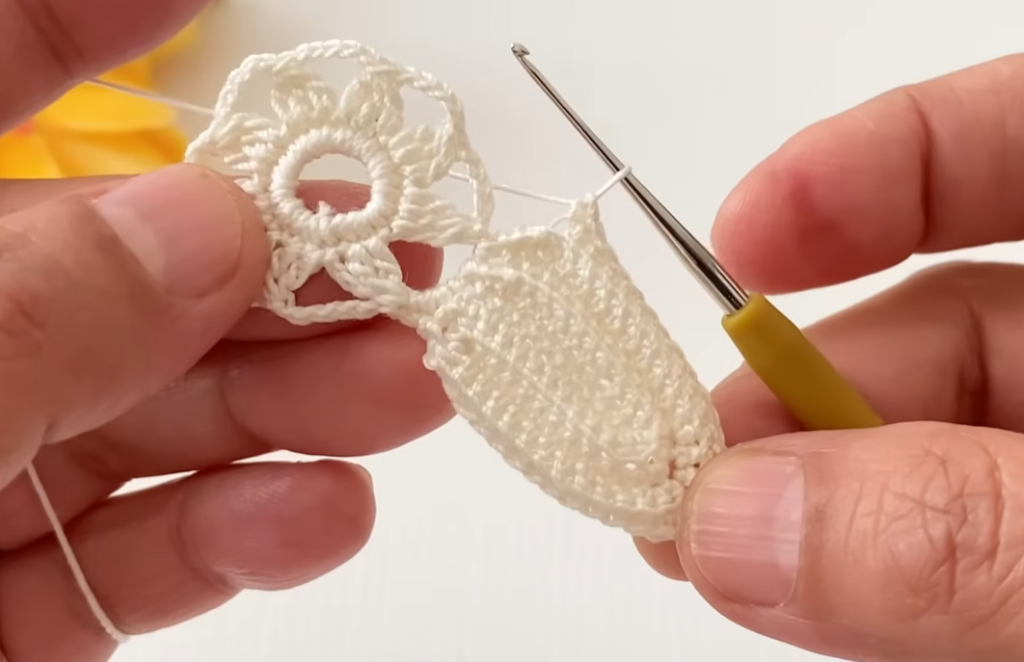
Round 5 (Petal Shaping):
- sl st across to the ch-3 space.
- ch 4 (counts as tr).
- Work 6 tr in the ch-3 space (a Petal Cluster – PC).
- ch 1.
- sc in the middle dc of the 3-dc group below.
- ch 1.
- Work 7 tr in the next ch-3 space.
- ch 1.
- Repeat from ** around.
- sl st to the top of the starting ch-4 to join. (8 Petals)
Round 6 (Closing the Petals):
- ch 1.
- sc in the first 7 tr of the petal.
- sc in the ch-1 space.
- LSC (Long Single Crochet) in the middle sc of Round 5 (this pulls the petal base down and creates a slight curve).
- sc in the ch-1 space.
- sc in the first 7 tr of the next petal.
- Repeat from ** around.
- sl st to the first sc to join. (14 sc per petal, 2 sc spacers)
📐 Part 5: Squaring the Bloom (Rounds 7–9)
We transition from the circular flower to the square mesh border.
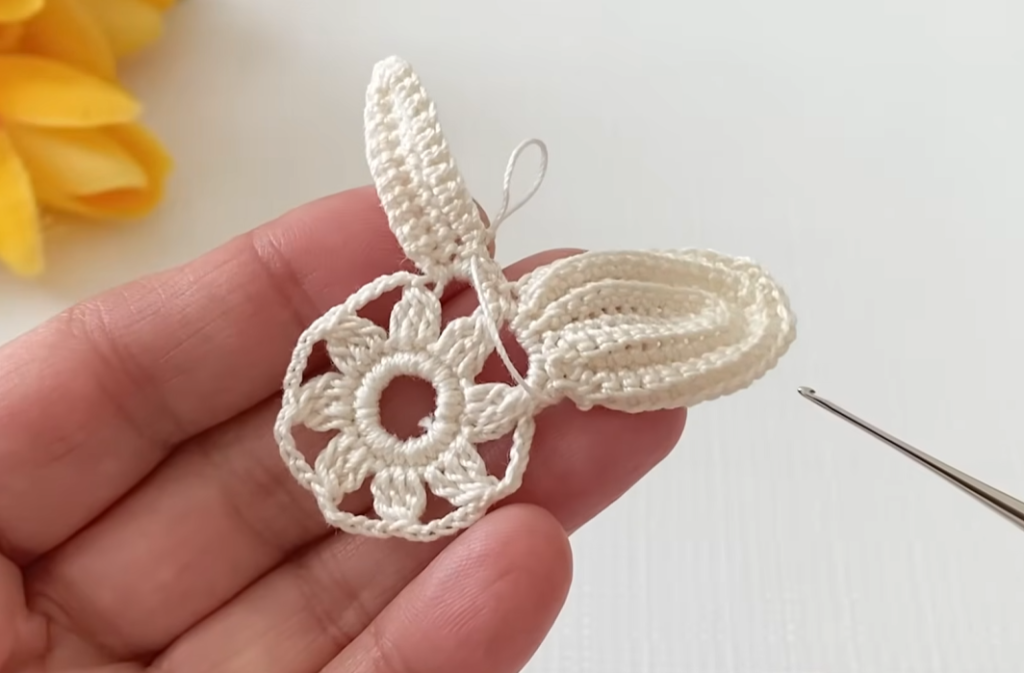
Round 7 (First Mesh Layer):
- ch 5 (counts as dc + ch 2).
- Skip 2 sc. dc in the next sc.
- ch 2.
- Skip 2 sc. dc in the next sc.
- ch 2.
- Skip 2 sc. dc in the next sc.
- ch 3 (Corner Chain).
- Skip 2 sc. dc in the next sc.
- Repeat the pattern around, establishing the four corner ch-3 spaces.
- sl st to the 3rd ch of the starting ch-5 to join.
Round 8 (Extending the Mesh):
- sl st into the ch-2 space.
- ch 5 (counts as dc + ch 2).
- dc in the next dc.
- ch 2.
- dc in the next dc.
- ch 2.
- Corner: In the ch-3 corner space, work (dc, ch 3, dc).
- ch 2.
- dc in the next dc.
- Continue the (ch 2, dc) pattern across the side.
- sl st to the 3rd ch of the starting ch-5 to join.
Round 9 (Final Square Layer):
- sl st into the ch-2 space.
- ch 5 (counts as dc + ch 2).
- dc in the next dc.
- Continue the (ch 2, dc) pattern across the side, ensuring you have the same number of spaces on all four sides.
- Corner: In the ch-3 corner space, work (dc, ch 3, dc).
- sl st to the 3rd ch of the starting ch-5 to join.
💎 Part 6: The Delicate Shell Edge (Round 10)
This final round adds a delicate, decorative scallop and provides key joining points.
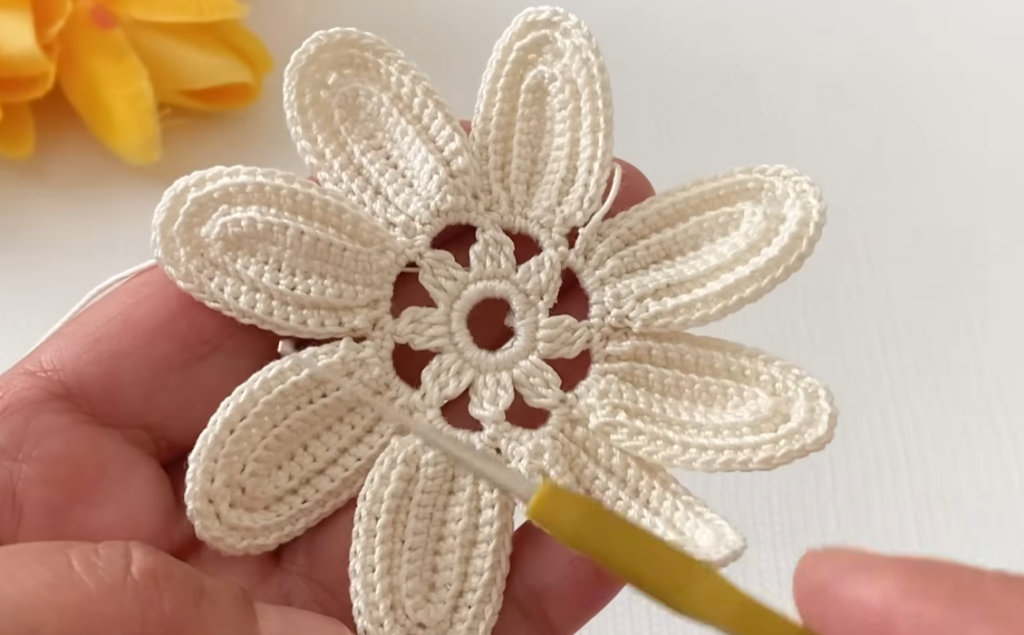
Round 10 (Shell and Picot Edge):
- sl st into the ch-2 space.
- ch 1.
- In the ch-2 space, work (sc, 3 dc, sc) (a Small Shell).
- sc in the next dc.
- Repeat the (Small Shell, sc) pattern across the side until you reach the corner.
- Corner: In the ch-3 corner space, work (sc, P, sc) (This will be the main joining point).
- sc in the next dc.
- Continue the (Small Shell, sc) pattern across the next side.
- sl st to the first sc to join.
- Fasten off.
Video Tutorial:
📌 Part 7: Finishing and Blocking
- Secure Ends: Fasten off your yarn. Use your tapestry needle to bury all tails invisibly into the solid stitches of the central flower. Avoid weaving into the lace mesh, as it will show.
- Blocking (Crucial): Blocking is essential to define the layered petals and pull the lacework border into a perfect square.
- Wet Block: Fully dampen the finished square.
- Pin: Pin the square to a blocking mat or foam board. Gently pull and pin out the four corner points (the corner Picots) to create a perfect 90-degree angle. Also, ensure the four sides of the mesh are perfectly straight and the petal layers are lying flat.
- Dry: Allow the piece to air dry completely before unpinning.
Your gorgeous Heirloom Petal Square is now complete! Will you use it as a coaster, an appliqué, or join it with others for a larger project?

